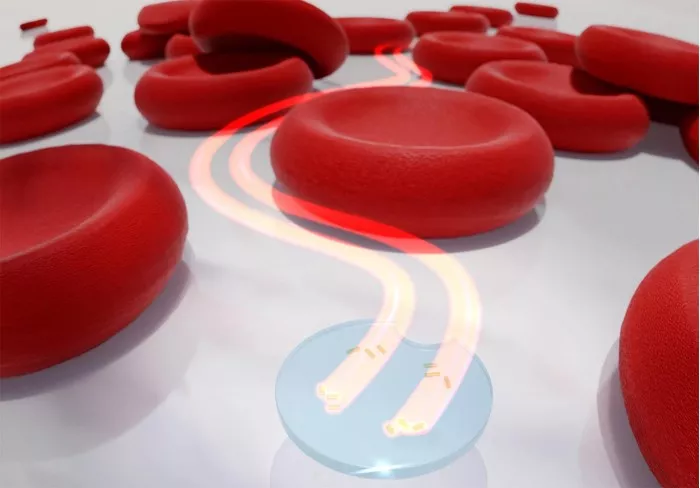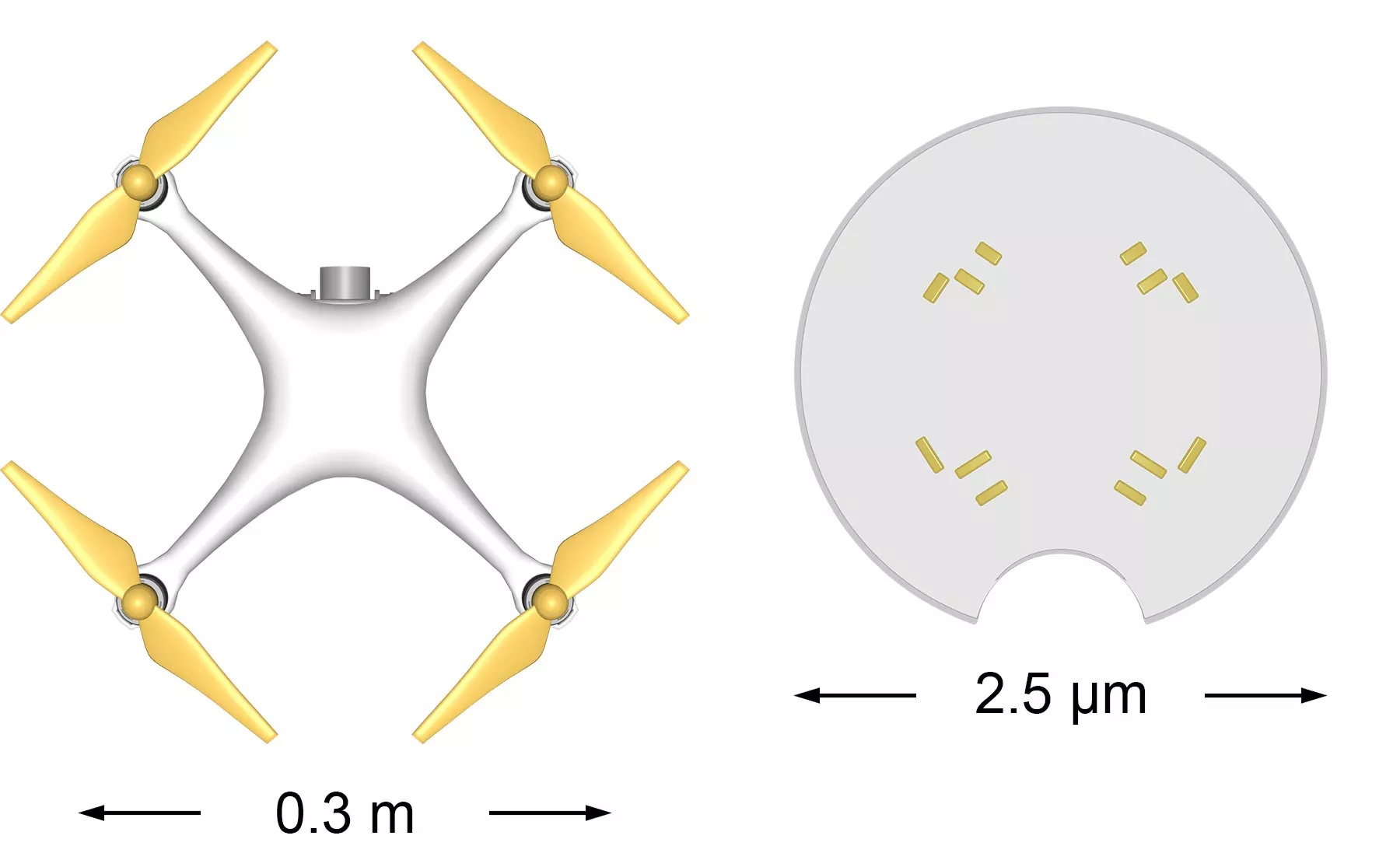The handheld laser pen does not produce significant recoil when "emitting" - although it emits a stream of directional light particles. The reason is very simple, because its mass is relatively huge compared with the very small recoil pulse caused by the light particles leaving the laser pen.

However, it has long been clear that optical recoil can indeed have a significant impact on the corresponding small particles. For example, the tail of a comet points away from the sun, partly due to the pressure of light. The issue of light spacecraft propelled by light sails has also been discussed repeatedly, most recently related to the starshot project, in which a fleet of micro spacecraft will be sent to Alpha Centauri.
An ordinary four rotor UAV as a model
In the journal Nature Nanotechnology, werzburg physicists led by Professor Bert Hecht now show for the first time that they can not only effectively push micron sized objects in the water environment with light, but also accurately control them on the surface with all three degrees of freedom (two translation and one rotation).

In doing so, the researchers were inspired by the ordinary four rotor UAV, where four independent rotors can fully control the movement. This possibility of control provides a new choice for nano and micro objects that are usually very difficult to deal with, such as the assembly of nanostructures, nano precision surface analysis or reproductive medicine.
Polymer disk with up to four light driven nano motors
The micro UAV in vilzburg consists of a transparent polymer disk with a diameter of 2.5 microns. Up to four independently addressable nano motors made of gold are embedded in the disk.
"These motors are based on optical antennas developed in vilzburg, tiny metal structures that are smaller than the wavelength of light," said Xiaofei Wu, a postdoctoral fellow at Hecht's research group, "These antennas are specifically optimized to receive circularly polarized light. This allows the motor to receive light regardless of the direction of the UAV, which is crucial for application. In a further step, the received light energy is emitted by the motor in a specific direction, resulting in an optical recoil, depending on the sense of rotation of the polarization (clockwise or counterclockwise) and either of the two different wavelengths of light."
Only with this idea can researchers effectively and accurately control their micro UAV. Because the mass of UAV is very small, it can achieve extreme acceleration.
The development of micro UAV is challenging. It started as early as 2016, with research funding provided by the Volkswagen foundation for risk projects.
Precision manufacturing based on single crystal gold
The extremely accurate manufacture of nano motor is very important for the function of micro UAV. The use of accelerated helium ions as a means of cutting nanostructures from single crystal gold has proved to change the rules of the game. In a further step, the researchers used electron beam lithography to produce the UAV fuselage. Finally, the UAV must be separated from the substrate and brought into the solution.
The researchers further correct their influence in the micro UAV experiment. In addition, the research team worked hard to complete the control options so that the height of the UAV above the surface can also be controlled. Of course, another goal is to install functional tools on micro UAVs.